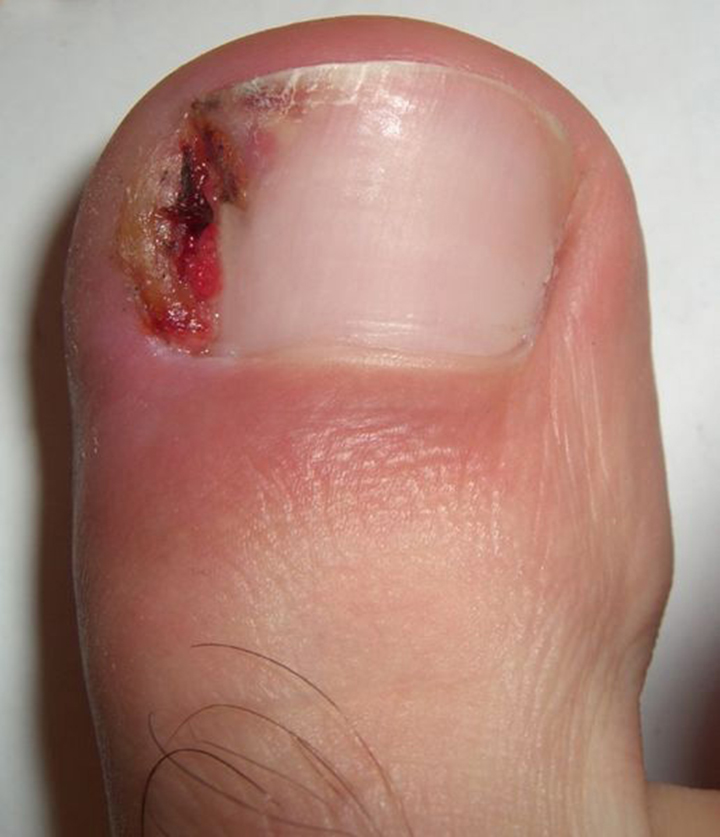
Affiliated Foot Care Center
Call 860•349•8500 or 203•294•4977

The causes of ingrown toenails may be:
Onychocryptosis (also known as an "Ingrown nail," or "Unguis incarnatus") is a common form of nail disease. It is an often painful condition in which the nail grows so that it cuts into one or both sides of the nail bed.
The main cause for onychocryptosis or "ingrown nail" is improper footwear including shoes with inadequate toe-box room and tight stockings that apply top and or side pressures; next is the damp wet atmosphere toes are subjected to all day in inclosed shoes, softening your nail-plate and swelling the skin of the nail bed, which eventually increases the convex arch or your toenail permanently; next is genetics; and last is trauma and disease.
You can also create ingrown toenails by improperly cutting your toenails, causing the nail to cut into the side-fold skin when it grows. Your nail bends inwards or upwards depending on the angle with which you have cut it. When you cut your nail, you need to take care to cut it at the right angle and also to not cut it too short. A shorter cut will bend the nail more, unless the cut is even on both top and bottom of the nail.
Ingrown toenails can be caused by injury, commonly blunt trauma where the flesh is pressed against the nail causing a small cut that swells. Also, injury to the nail can cause it to grow abnormally, making it thicker or wider than normal or even bulged or crooked. Stubbing your toenail, dropping things on your toe and 'going through the end of your shoes' in sports are common injuries to the digits. Injuries to your toes can be prevented by wearing properly fitting shoes, especially when working or playing.
Trying to "outwait" an ingrown toenail is not a good ideal Dr. Fosdick can drain the fluid from the nail bed, re-trim the nail and, in more critical cases, surgically alter the nail and nailbed to prevent further damage and pain to your toe. If you don't treat an ingrown toenail, you risk infection, which will undoubtedly cause even more pain.